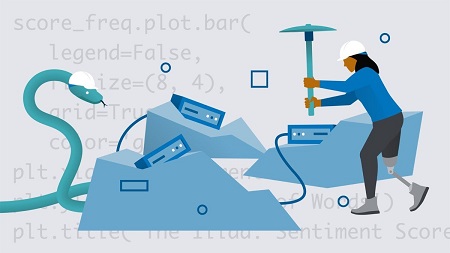
English | MP4 | AVC 1280×720 | AAC 48KHz 2ch | 3h 03m | 638 MB
Data mining is the area of data science that focuses on finding actionable patterns in large and diverse datasets: clusters of similar customers, trends over time that can only be spotted after disentangling seasonal and random effects, and new methods for predicting important outcomes. In this course, instructor Barton Poulson introduces you to data mining that uses the programming language Python. Barton goes over some preliminaries, such as the tools you may use for data mining. He discusses aspects of dimensionality reduction, then explains clustering, including hierarchical clustering, k-Means, DBSCAN, and more. Barton covers classification, including kNN and decision trees. He goes into association analysis and introduces you to Apriori, Eclat, and FP-Growth. Barton steps you through a time-series decomposition, then concludes with sentiment scoring and other text mining tools.
Table of Contents
1 Python for data mining
2 PCA
3 LDA
4 t-SNE
5 Challenge- PCA
6 Solution- PCA
7 Clustering overview
8 Penguin dataset
9 Hierarchical clustering
10 K-means
11 DBSCAN
12 What you should know
13 Challenge- K-means
14 Solution- K-means
15 Classification overview
16 Spambase dataset
17 KNN
18 Naive Bayes
19 Decision trees
20 Challenge- KNN
21 Solution- KNN
22 Association analysis overview
23 Exercise files
24 Groceries dataset
25 Apriori
26 Eclat
27 FP-Growth
28 Challenge- Apriori
29 Solution- Apriori
30 Time-series mining
31 Air Passengers dataset
32 Time-Series decomposition
33 ARIMA
34 Tools for data mining
35 MLP
36 Challenge- Decomposition
37 Solution- Decomposition
38 Text mining overview
39 Iliad dataset
40 Sentiment analysis- Binary classification
41 Sentiment analysis- Sentiment scoring
42 Word pairs
43 Challenge- Sentiment scoring
44 Solution- Sentiment scoring
45 The CRISP-DM data mining model
46 Next steps
47 Privacy, copyright, and bias
48 Validating results
49 Dimensionality reduction overview
50 Handwritten digits dataset
Resolve the captcha to access the links!